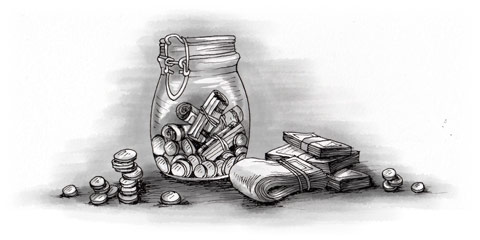Credit cards
For several years now credit cards have been accepted in most of the major tourist areas in Cambodia. Credit cards will be accepted in the high-end hotels, shops and restaurants. Some mid-range places accept them as well. Keep in mind that you will often be charged extra for using a credit card (another 2-4% on your bill). Visa, MasterCard and JCB cards are nearly always accepted. Cards such as the AMEX and the ANZ Bluesport card are gaining popularity as well. Credit cards are often not recognised if you venture out of the expat or tourist areas.
ATMs
ATMs can be found nearly everywhere. Typically the ones with international options are in:
- Siem Reap
- Sihanoukville
- Battambang
- Phnom Penh
- Kampot
Canadia Bank and ANZ Royal Bank ATMs accept Maestro, Visa and MasterCard SBC bank accepts Visa and MasterCard You can withdraw US dollars at ATMs and you can also find ATMs marked on the city maps. Keep in mind that you will pay a fee for withdrawing US dollars.
How much you can withdraw depends on the bank and your card limit. If you have a visa debit card, you should be able to use Canadia Bank ATMs for free. Be sure to ask questions about withdrawing money when deciding which bank you wish to open an account with!
Transferring money
A bank transfer is the most common and easiest way to send money abroad. You will need to go to a bank and order the transfer. Most of the time this is reliable, yet it may take a few weeks to process and can turn out to be very expensive due to all the fees; it can add up to 15% of the amount transferred! You will have to fill in a form and bring your original passport (and sometimes a copy too).
Alternatively you could use money transfer bureaus such as Western Union or Paygram. These tend to be quicker but the fees and exchange rates remain high. In some areas you may notice that Western Union Offices have a daily limit of US$300, so make sure you take some smaller denomination travellers cheques.
Wire transfers (sometimes still known as a telegraphic transfer in Cambodia) are available at all of the bigger banks, you will also have to go to a bank for any international transfers.
Internet banking
Unfortunately, internet banking is not fully integrated in Cambodia. Though nearly all of the bigger banks (for example ANZ, FTB, Acleda and Canadia bank) offer an internet banking service of sorts. This includes:
- viewing your current account balances and transaction history
- transfer funds between your linked accounts
- transfer funds between other linked accounts (third party transfers)
- Schedule payments
- Request local or international transfers
- Pay bills, such as electricity/water/telephone
This is only possible if the other account belongs to the same bank as your account does.
Some banks even offer mobile banking, which allows you to:
- View foreign exchange rates
- View interest rates
- Search for ATMs
Traveller's cheques
Traveller's cheques are accepted at most banks, major hotels, restaurants and even some money exchange bureaus. AMEX in US dollars are the most widely accepted traveller's cheques.
While using traveller's cheques may seem obsolete to some, it is a very handy way of carrying money in Cambodia. You can get your US dollars at most banks and money exchange places for only a 2% charge. For purchases it is advisable to use cash or card as many businesses will not accept travellers cheques.
Just remember when paying in Cambodia that cash is the easiest and accepted everywhere, credit cards are accepted in larger stores and in cities, and traveller’s cheques are not widely accepted outside hotels and banks.
Paying bills
Most of the time you will pay your landlord directly for water, electricity and rent. The date of payment will vary from landlord to landlord. You should always get a receipt which tells you the total amount of rent, water usage, and the previous and current meter readings, in order to calculate the total amount of power used.
As mentioned above, bills can be paid via internet banking, but remember, this is only possible if the other account belongs to the same bank as your account does.
You can also pay your bills at ATMs as well by following these steps:
- Find an ATM of your bank and insert your card
- Choose the language (English is available)
- Enter your PIN
- Select a transaction type (you can choose balance enquiry, change PIN and other options are available as well, you will probably have to click on “Other services”)
- Select the requested type (choose Bill Payment Service)
- Select the account type (which is savings)
- Select the company
- Enter your consumer number
- Enter the amount of money you wish to pay
- Your transfer should be successful
Most of these steps are similar to the ones at other banks
You can also visit the head office of the utility company (or one of its branches) to pay your bills. Besides that, some bank branches offer a bill payment service as well. Remember to check your bill before you pay and always get a receipt!

